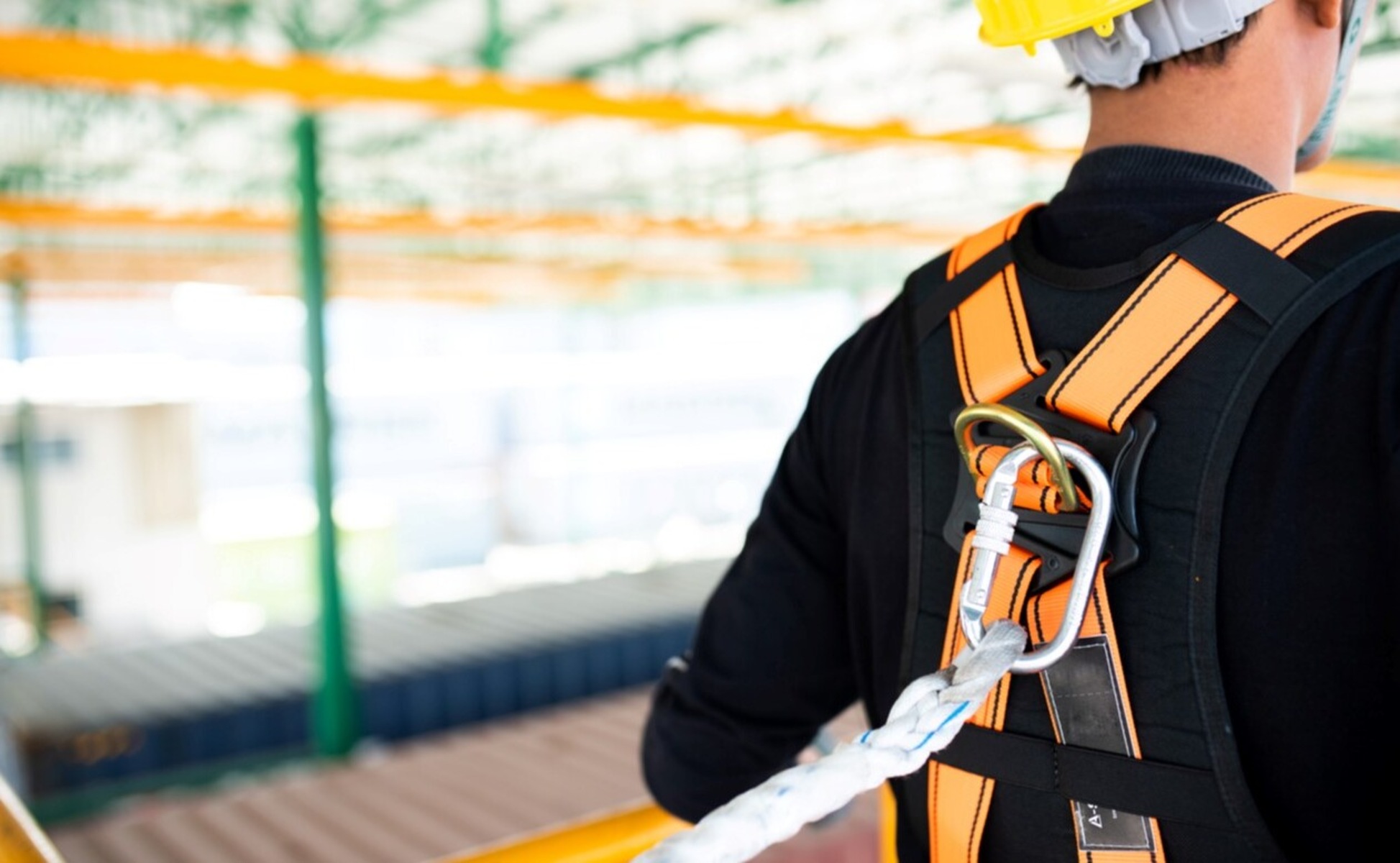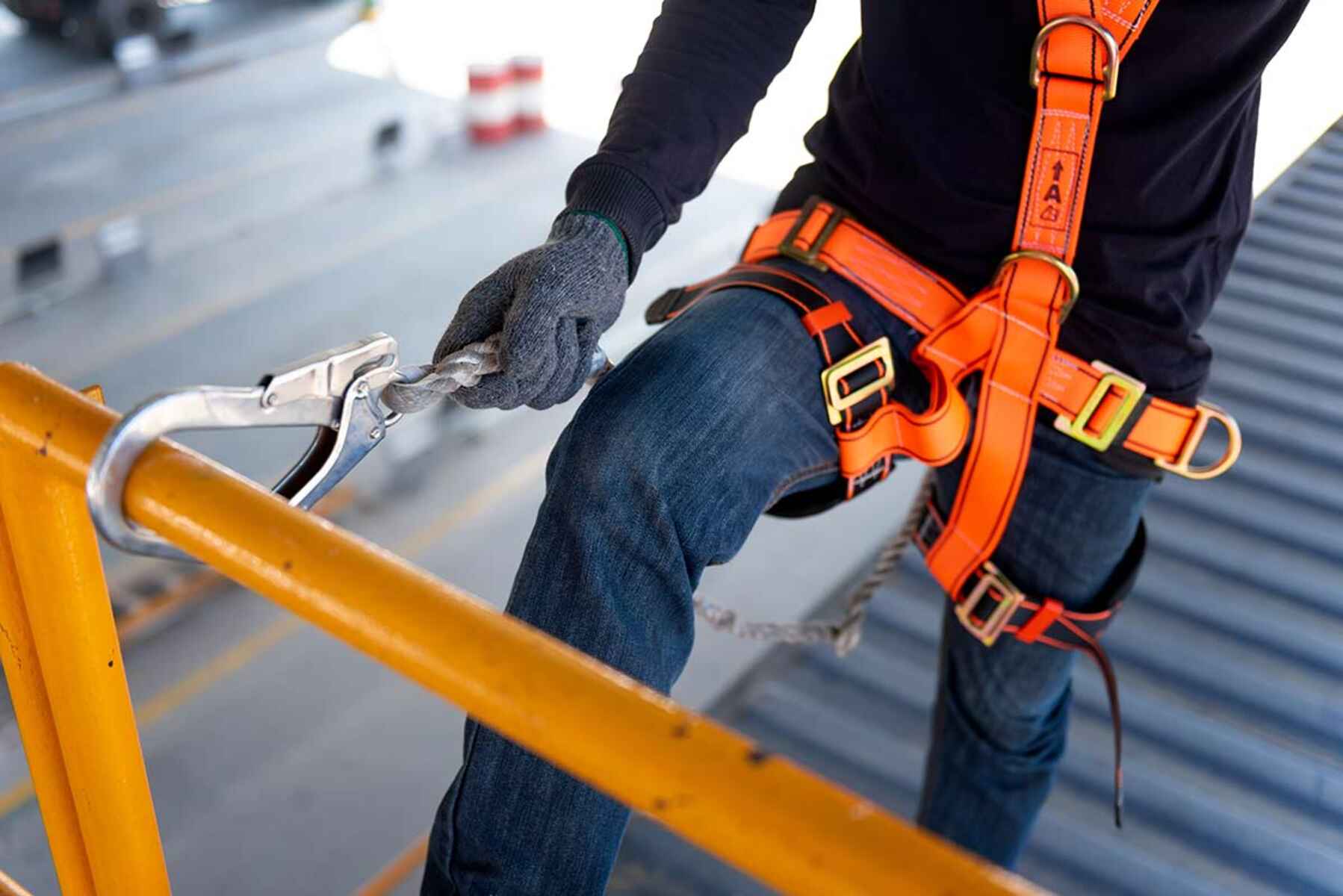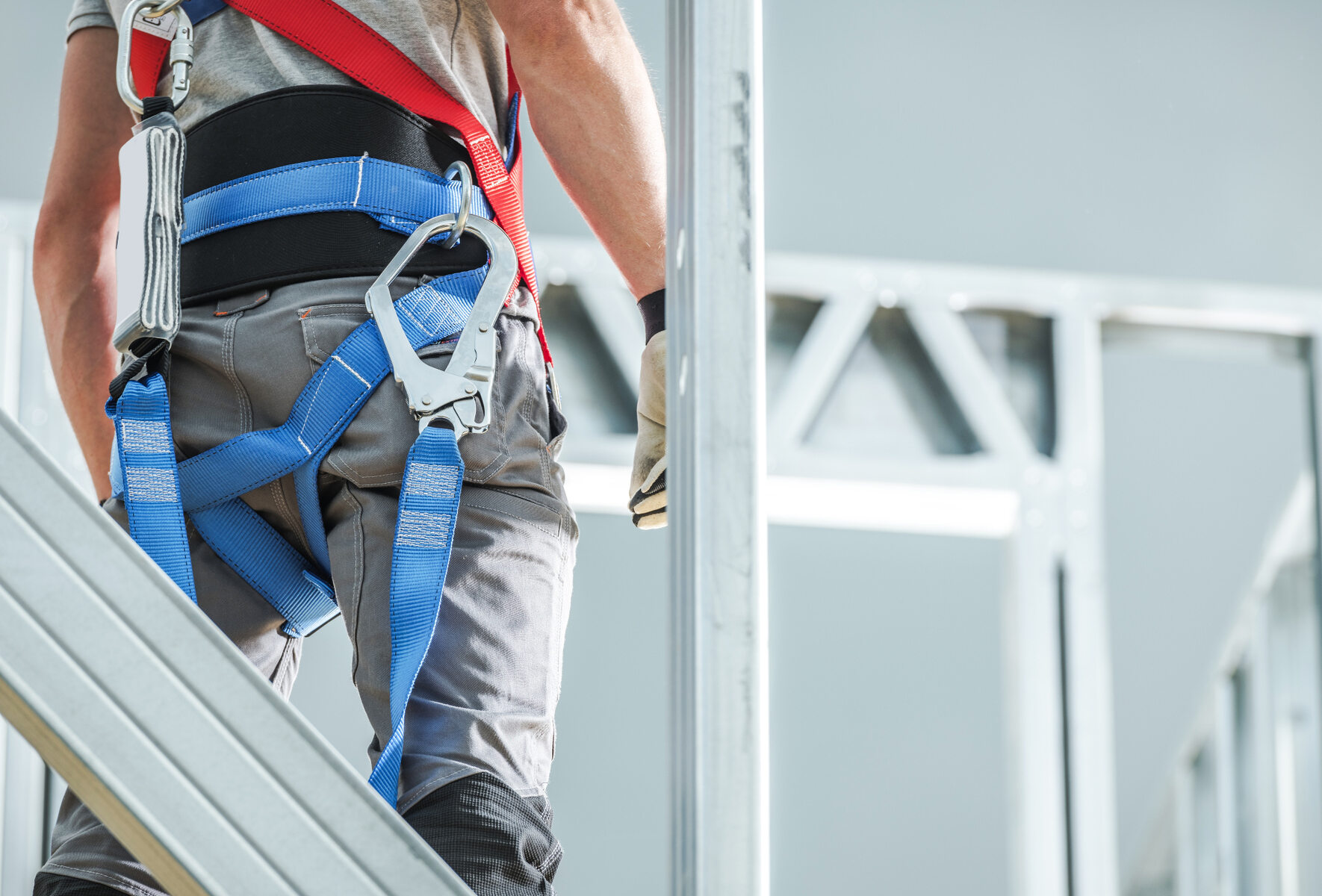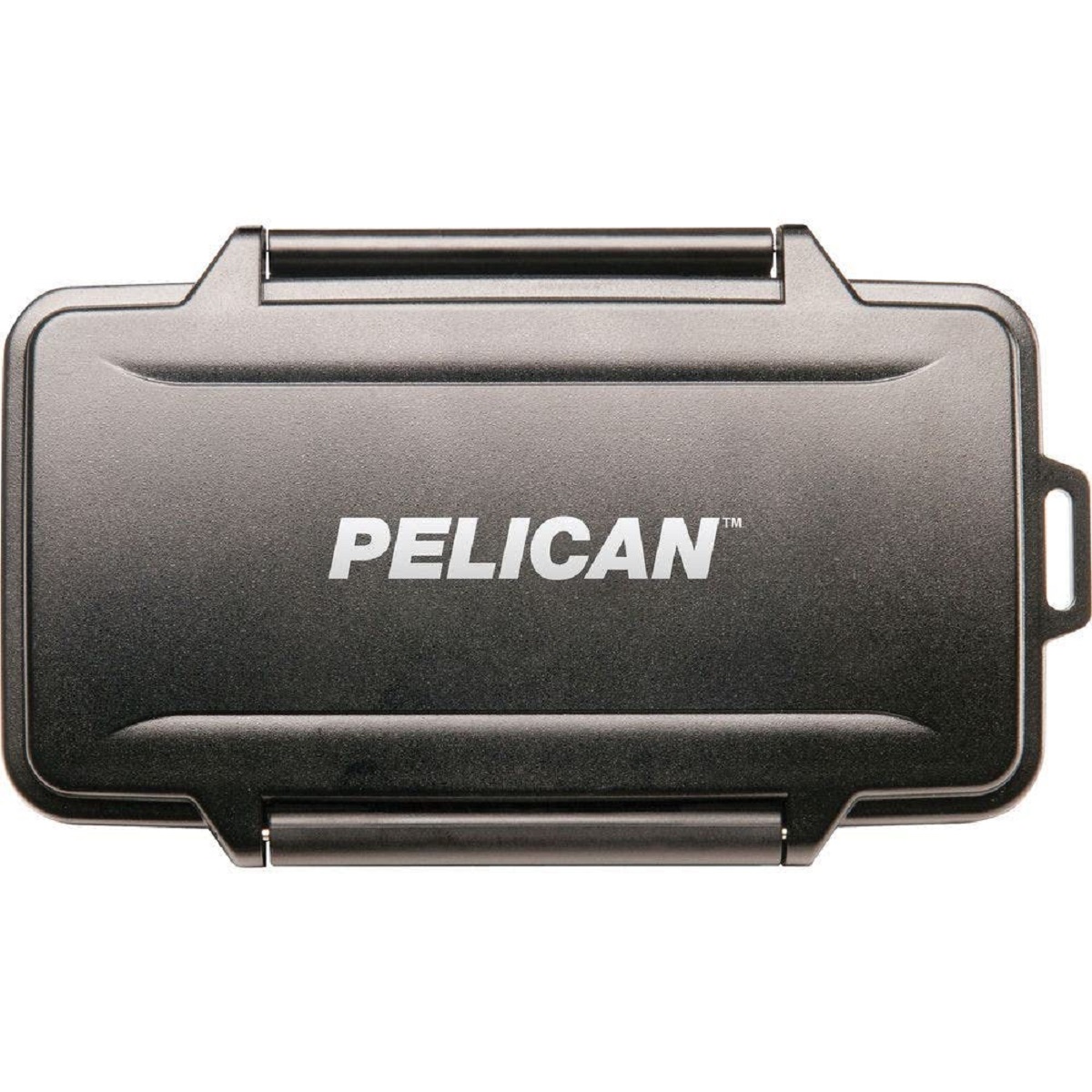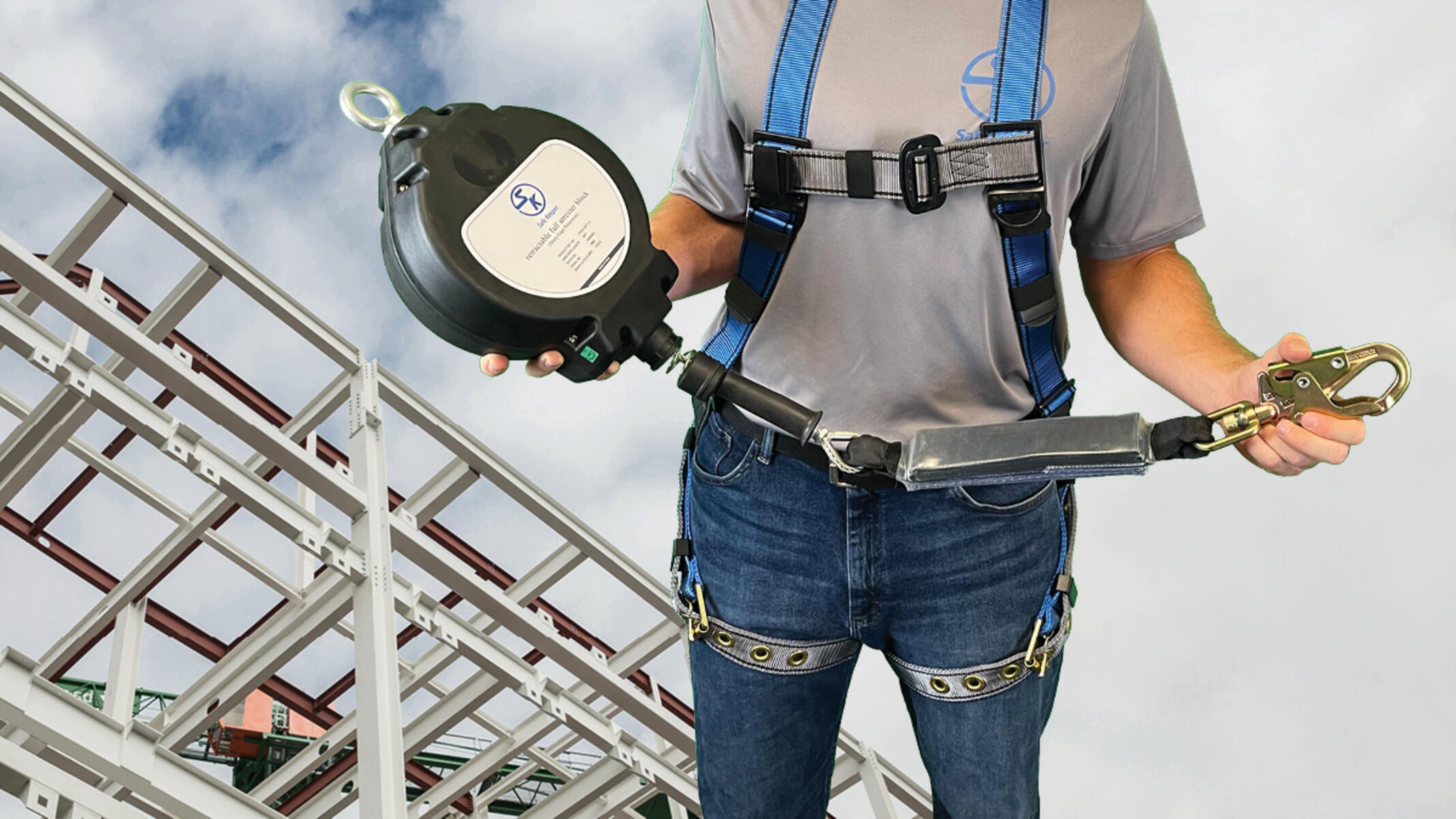Introduction
When it comes to working at heights, safety is paramount. Every year, numerous accidents occur due to falls from elevated surfaces, leading to severe injuries and even fatalities. In such scenarios, the proper utilization of safety equipment becomes crucial. One such essential piece of gear is the shock-absorbing lanyard.
A shock-absorbing lanyard is a fundamental component of fall protection systems, designed to minimize the impact forces generated during a fall. It serves as a lifeline for workers at elevated work sites, offering a crucial layer of protection against potential hazards. Understanding the mechanism behind shock-absorbing lanyards is vital for both employers and employees in various industries, including construction, maintenance, and telecommunications.
In this comprehensive guide, we will delve into the intricacies of shock-absorbing lanyards, exploring their functionality, selection criteria, and maintenance requirements. By gaining a deeper understanding of these critical safety tools, individuals can make informed decisions to safeguard themselves and their colleagues while working at heights.
The following sections will provide an in-depth analysis of shock-absorbing lanyards, shedding light on their significance and the factors that contribute to their effectiveness. From the underlying principles of shock absorption to the proper utilization and maintenance practices, this guide aims to equip readers with the knowledge needed to ensure safety in high-risk work environments.
As we embark on this exploration, it is essential to recognize the pivotal role that shock-absorbing lanyards play in preventing injuries and preserving lives. By embracing a proactive approach to safety and harnessing the potential of reliable fall protection equipment, individuals can mitigate the inherent risks associated with working at elevated heights. Let's delve into the world of shock-absorbing lanyards and uncover the mechanisms that make them indispensable tools for ensuring safety in high-stakes work environments.
What is a Shock Absorbing Lanyard?
A shock-absorbing lanyard, often referred to as a fall arrest lanyard, is a critical component of personal fall protection systems used in various industries. It is specifically designed to mitigate the impact forces experienced by a worker during a fall from an elevated position. This essential safety equipment consists of a flexible line, typically made of synthetic materials such as nylon or polyester, and incorporates an integrated shock-absorbing mechanism.
The primary function of a shock-absorbing lanyard is to reduce the forces exerted on the body in the event of a fall. When a worker experiences a sudden descent, the shock-absorbing component of the lanyard deploys, effectively dissipating the kinetic energy generated upon impact. This crucial feature helps minimize the risk of injury, particularly to the spine and other vital body parts, by limiting the amount of force transmitted to the individual.
In addition to its shock-absorbing capabilities, a lanyard is equipped with connectors at both ends, allowing for secure attachment to a full-body harness worn by the worker. These connectors are designed to facilitate quick and reliable anchorage to suitable anchor points, such as lifelines or structural elements capable of withstanding the forces generated during a fall.
It is important to note that shock-absorbing lanyards are available in various configurations to accommodate specific work environments and fall protection requirements. Different models may feature adjustable lengths, energy-absorbing webbing, or specialized connectors to suit diverse applications. Furthermore, these lanyards are designed to meet stringent safety standards and must undergo rigorous testing to ensure their effectiveness in real-world fall scenarios.
In essence, a shock-absorbing lanyard serves as a crucial lifeline for workers at elevated heights, offering a vital layer of protection against the inherent risks associated with working in such environments. By understanding the fundamental purpose and construction of these essential safety tools, individuals can appreciate their role in mitigating the potential impact of falls and upholding safety standards in high-risk work settings.
How Does a Shock Absorbing Lanyard Work?
A shock-absorbing lanyard operates on the principle of energy dissipation to minimize the impact forces exerted on a worker during a fall. When a fall occurs, the lanyard's integrated shock-absorbing mechanism comes into play, effectively reducing the kinetic energy generated upon impact. This mechanism typically consists of specialized webbing or tearing stitching designed to elongate and deform under load, absorbing and dissipating energy in the process.
The process begins as the worker experiences a sudden descent, causing the lanyard to undergo rapid extension. This extension initiates the activation of the shock-absorbing component, which undergoes controlled deformation to absorb the energy resulting from the fall. By elongating and tearing in a controlled manner, the lanyard effectively converts the kinetic energy of the fall into mechanical work, dissipating a significant portion of the force before it reaches the worker's body.
The deployment of the shock-absorbing mechanism significantly reduces the impact forces transmitted to the worker, thereby minimizing the risk of injury. By absorbing and dissipating energy, the lanyard helps to decelerate the fall in a controlled manner, preventing abrupt and potentially harmful stops. This controlled deceleration is vital in safeguarding the worker's well-being, particularly by mitigating the risk of spinal injuries and other trauma associated with sudden impacts.
In addition to the shock-absorbing function, the lanyard's connectors play a crucial role in the overall mechanism. These connectors, typically in the form of snap hooks or carabiners, securely attach the lanyard to the worker's full-body harness and the anchorage point. Their robust design and reliable locking mechanisms ensure that the lanyard remains securely connected throughout the duration of the task, providing essential support in the event of a fall.
Overall, the intricate working of a shock-absorbing lanyard revolves around its ability to effectively dissipate the energy generated during a fall, thereby reducing the impact forces transmitted to the worker. By combining advanced materials and engineering principles, these essential safety tools play a pivotal role in enhancing the safety and well-being of individuals working at elevated heights, underscoring their significance in fall protection systems across various industries.
Choosing the Right Shock Absorbing Lanyard
Selecting the appropriate shock-absorbing lanyard is a critical aspect of ensuring comprehensive fall protection for workers in elevated work environments. With a myriad of options available, it is essential to consider several key factors to make an informed decision that aligns with specific safety requirements and operational needs. Here's a detailed exploration of the considerations involved in choosing the right shock-absorbing lanyard:
1. Compliance with Safety Standards:
When evaluating shock-absorbing lanyards, it is imperative to prioritize models that comply with relevant safety standards and regulations. These standards, such as those established by organizations like the Occupational Safety and Health Administration (OSHA) in the United States or the European Committee for Standardization (CEN), ensure that the lanyards meet stringent performance and quality criteria. By selecting compliant lanyards, employers and safety managers can instill confidence in the reliability and effectiveness of the chosen fall protection equipment.
2. Application-Specific Features:
Different work environments may necessitate specific features in a shock-absorbing lanyard to accommodate unique operational requirements. For instance, tasks involving welding or hot work may require lanyards with heat-resistant properties, while environments with sharp edges or abrasive surfaces may demand lanyards equipped with cut-resistant webbing. By identifying the specific environmental challenges and work conditions, organizations can tailor their selection to include lanyards with appropriate features, thereby enhancing safety and operational efficiency.
3. Length and Adjustability:
The length of a shock-absorbing lanyard plays a crucial role in facilitating safe and unrestricted movement for workers while ensuring proper fall clearance. Lanyards with adjustable lengths offer versatility, allowing users to customize the working range based on the task at hand. This adaptability is particularly beneficial in varied work settings, enabling workers to maintain an optimal connection to the anchorage point while performing tasks at different heights.
4. Weight and Comfort:
Considering the weight and ergonomics of shock-absorbing lanyards is essential to minimize user fatigue and enhance overall comfort. Lightweight yet durable lanyards contribute to ease of wear, reducing the physical strain on workers during prolonged use. Additionally, ergonomic design elements, such as padded webbing and tangle-free connectors, can further elevate user comfort, promoting greater compliance with safety protocols.
5. Compatibility with Harness and Anchorage:
Ensuring compatibility between the shock-absorbing lanyard, full-body harness, and designated anchorage points is paramount for seamless integration within the fall protection system. Lanyards and harnesses from the same manufacturer or certified to work together offer enhanced compatibility, promoting a cohesive and reliable safety setup. Moreover, verifying the suitability of anchorage points for connecting the lanyard is crucial to uphold the integrity of the fall protection system.
By meticulously considering these factors and conducting thorough assessments of the operational environment, organizations can make informed decisions when choosing the right shock-absorbing lanyard. This proactive approach not only fosters a culture of safety but also underscores the commitment to prioritizing the well-being of workers in high-risk work settings.
Proper Use and Maintenance of Shock Absorbing Lanyards
Ensuring the proper use and maintenance of shock-absorbing lanyards is essential for preserving their functionality and upholding the safety of workers at elevated heights. By adhering to recommended guidelines and best practices, organizations can optimize the performance and longevity of these critical safety tools. Here's a comprehensive overview of the key considerations related to the proper use and maintenance of shock-absorbing lanyards:
1. Pre-Use Inspection:
Before each use, it is imperative to conduct a thorough inspection of the shock-absorbing lanyard to identify any signs of wear, damage, or deterioration. This inspection should encompass the entire length of the lanyard, including the webbing, stitching, connectors, and shock-absorbing components. Any indications of fraying, cuts, abrasions, or deformities should prompt immediate removal from service and replacement to prevent compromising safety during operation.
2. Correct Attachment and Fit:
Proper attachment and fit of the shock-absorbing lanyard are crucial for ensuring optimal functionality and user safety. The lanyard should be securely connected to the designated anchorage point using compatible connectors, such as snap hooks or carabiners, and attached to the D-ring of the user's full-body harness. Additionally, ensuring that the lanyard is appropriately adjusted to minimize slack and provide sufficient fall clearance is essential to prevent potential hazards during work activities.
3. Compliance with Manufacturer's Recommendations:
Adhering to the manufacturer's instructions and recommendations regarding the use, care, and maintenance of shock-absorbing lanyards is fundamental in preserving their integrity and performance. This includes following specified weight and user limitations, as well as refraining from unauthorized modifications or alterations that may compromise the lanyard's safety features.
4. Regular Maintenance and Cleaning:
Implementing a routine maintenance schedule for shock-absorbing lanyards is essential to mitigate the effects of environmental exposure and usage-related wear. Periodic cleaning, using mild soap and water, can help remove dirt, debris, and contaminants that may compromise the lanyard's structural integrity. Additionally, thorough drying and storage in a clean, dry environment can prevent the onset of mold, mildew, or degradation due to prolonged exposure to moisture.
5. Retiring and Replacement:
Continuous monitoring of the shock-absorbing lanyard's condition is vital, and any indications of excessive wear, damage, or exposure to harsh chemicals or environments should prompt immediate retirement and replacement. Establishing clear criteria for retiring lanyards based on visual inspections, usage history, and compliance with safety standards is essential in maintaining a reliable fall protection system.
By diligently adhering to these guidelines for the proper use and maintenance of shock-absorbing lanyards, organizations can uphold the safety and well-being of workers while maximizing the longevity and effectiveness of these critical safety components. This proactive approach not only fosters a culture of safety but also underscores the commitment to prioritizing the welfare of individuals operating in high-risk work environments.
Conclusion
In conclusion, the significance of shock-absorbing lanyards in ensuring safety at elevated work sites cannot be overstated. These essential fall protection tools play a pivotal role in mitigating the potential impact of falls, safeguarding workers from severe injuries, and preserving lives in high-risk environments. By understanding the underlying mechanisms, selection criteria, and maintenance practices associated with shock-absorbing lanyards, individuals and organizations can fortify their commitment to safety and enhance the overall efficacy of their fall protection systems.
The comprehensive exploration of shock-absorbing lanyards has shed light on their fundamental purpose and functionality. These critical safety components, equipped with advanced shock-absorbing mechanisms, are designed to dissipate the energy generated during a fall, thereby reducing the impact forces transmitted to the worker. By facilitating controlled deceleration and energy absorption, shock-absorbing lanyards serve as indispensable lifelines for individuals working at heights, offering a crucial layer of protection against the inherent risks associated with elevated work environments.
Furthermore, the process of choosing the right shock-absorbing lanyard involves careful consideration of compliance with safety standards, application-specific features, length and adjustability, weight and comfort, and compatibility with harness and anchorage. By prioritizing these factors, organizations can tailor their fall protection equipment to meet the unique demands of various work settings, thereby enhancing safety and operational efficiency.
Additionally, the proper use and maintenance of shock-absorbing lanyards are integral to preserving their functionality and ensuring the safety of workers. From pre-use inspections and correct attachment procedures to compliance with manufacturer's recommendations and routine maintenance, diligent adherence to best practices can optimize the performance and longevity of these critical safety tools, contributing to a culture of safety and well-being in the workplace.
In essence, the comprehensive understanding of shock-absorbing lanyards and their role in fall protection systems empowers individuals and organizations to proactively address the safety challenges associated with working at heights. By embracing a holistic approach to safety, prioritizing the selection of appropriate fall protection equipment, and upholding rigorous maintenance practices, stakeholders can foster a work environment where the well-being of workers remains paramount, ultimately paving the way for enhanced safety and operational excellence in high-stakes work settings.







